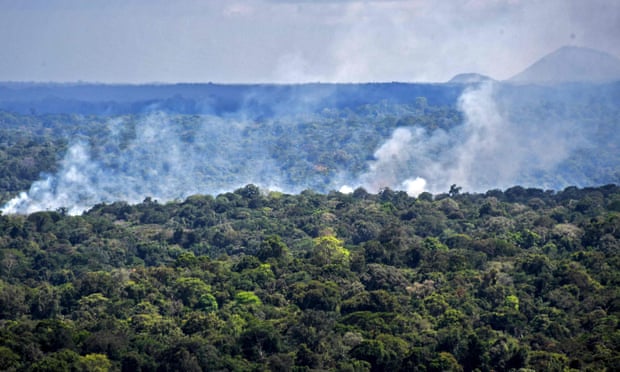
©Nelson Almeida
Vocabulary:
I will read the words, meanings, and sample sentences. Then, repeat after me.
- surge /surj/
- amount to /uh-MOUNT-too/
- summit /SUHM-it/
- brunt /bruhnt/
- searing /SEER-ing/
[verb] – to increase suddenly and strongly
Their revenue surged in the last five years.
[phrasal verb] – to become a particular amount
His medical bill for this week alone amounted to $3,000.
[noun] – an important formal meeting between leaders of governments from two or more countries
The ASEAN leaders will be present at this summit.
[noun] – the main force of something unpleasant
The tourism industry also felt the brunt of the global pandemic.
[adjective] – (especially of a criticism or story) very powerful and emotional or criticizing someone or something very strongly
The caricature is a searing attack on the public official’s corruption issues.
Article reading:
Please read the whole article. Then, I will check your pronunciation and intonation.
The rate of forest destruction all over the world surged last year, losing at least 42,000 square kilometers of tree cover in key tropical areas. The data from the University of Maryland and the online tracking network Global Forest Watch said that the loss was above the average for the last two decades, with 2020 being the third-worst year for forest destruction since the monitoring started in 2002. The losses were especially serious in tropical primary forests like the Amazon, Congo, and Southeast Asia. These tropical rainforests are important in controlling the global climate, as well as irreplaceable habitats for many species. According to the World Resources Institute (WRI), losses from this type of forest alone amounted to 4.2 million hectares, which is equivalent to the annual carbon dioxide emissions of more than 575 million vehicles. In total, 12.2 million hectares of trees were lost in 2020, which is 12% higher than in 2019.
The United Kingdom will host the vital United Nations Climate Change Conference of the Parties (UNCOP26) talks on November of this year, a UN summit about climate change. Distinguished senior fellow at WRI, Frances Seymour, said that forests need to be on the agenda for the UNCOP26. The president of Cop26, Alok Sharma, stated that wealthy countries should support poor countries who are bearing the brunt of climate change. “The people who have done the least to cause the climate crisis are suffering the most. This is a searing injustice. And so developed countries have a particular responsibility to support the response of communities which are most vulnerable to climate change. We are running out of time,” Sharma added.
The United Kingdom will host the vital United Nations Climate Change Conference of the Parties (UNCOP26) talks on November of this year, a UN summit about climate change. Distinguished senior fellow at WRI, Frances Seymour, said that forests need to be on the agenda for the UNCOP26. The president of Cop26, Alok Sharma, stated that wealthy countries should support poor countries who are bearing the brunt of climate change. “The people who have done the least to cause the climate crisis are suffering the most. This is a searing injustice. And so developed countries have a particular responsibility to support the response of communities which are most vulnerable to climate change. We are running out of time,” Sharma added.
Discussion Questions:
I will read each question. Then, please answer them.
- What images are in your mind when you hear the word ‘Amazon’? Please explain.
- What do you think are the primary causes of deforestation in these regions?
- How important is the UN’s role in mitigating the effects of deforestation?
- Why do governments allow deforestation?
- As an individual, how can you help in rehabilitating these forests?
Summarization
Please summarize the whole article using your own words and expressions. You will have one minute to prepare before you answer.
Describe:
Please explain the definition of each word listed below based on your understanding. You can provide example sentences if needed.
- tropical
- primary
- climate change
- senior
- crisis